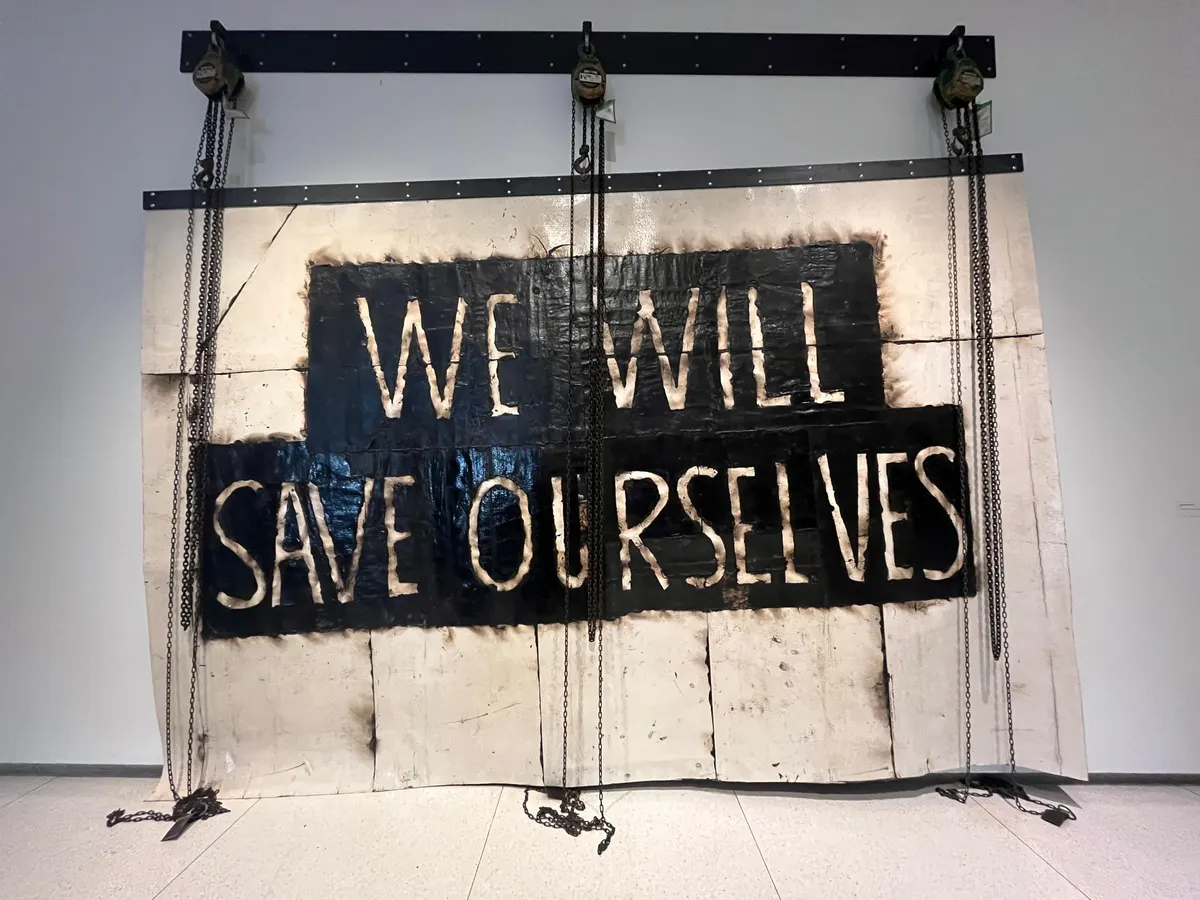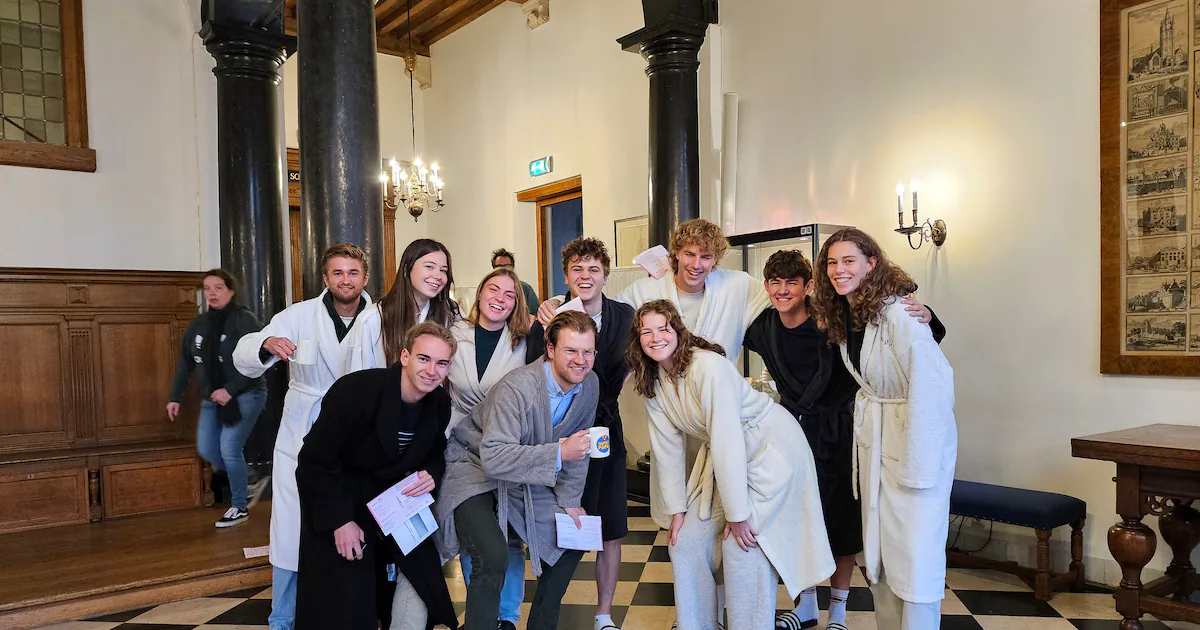Copyright forbes

Theaster Gates, 'We Will Save Ourselves,' 2024, installed at University of Chicago. Steel, winches, rubber, oil based enamel. Chadd Scott What would cities look like if artists had a role in creating them? Designing them. Building them. Revitalizing them. Not using artists to produce a monument or mural after the planning and big decisions have been made by engineers and politicians; incorporating artists’ unique perspectives and talents from the start. At every step along the way. Chicago’s Theaster Gates (b. 1973) has been demonstrating the power and possibility of artists as city-builders for almost 20 years, using a South Side neighborhood in his hometown as the prototype. In this under-resourced community, he’s purchased and rehabilitated a handful of historic buildings into art and community spaces. Places for learning. For connecting. To be proud of. Inspirational. A proof of concept for how the vision of artists can make and remake cities in more exciting, sustainable, and equitable ways. Gates’ latest demonstration of an artist’s potential for civic planning comes at GRAY Chicago gallery (2044 West Carroll Avenue) during the exhibition “Oh, You’ve Got to Come Back to the City” through December 20, 2025. The presentation takes it’s name from Chicagoan Marvin Tate’s (b. 1959) song “City Promenade.” His lilting, delicate, amusing, waltz-y ballad makes an appeal for coming back to the city–Chicago specifically, but any city more broadly–“the place where you belong,” “the place where you were born.” Developed in conjunction with his exhibition, “Unto Thee,” through February 22, 2026, at the Smart Museum of Art at the University of Chicago, roughly two miles, but a world away, from Gates’ South Side efforts, “Oh, You’ve Got to Come Back to the City” offers a reflection on Gate’s life as a craftsman, urban planner, and teacher. Gates has been a professor in the Visual Arts department at the University, one of the world’s most admired, since 2012. Theaster Gates And Marvin Tate Installation view of "Theaster Gates: OH, YOU’VE GOT TO COME BACK TO THE CITY" at GRAY Chicago. Image courtesy of GRAY Chicago/New York. © Theaster Gates Theaster Gates met Marvin Tate at a long-standing Chicago poetry event known as Lit-X, Literary Explosion. Both were regulars. That was more than 25-years ago now, but Gates remembers it fondly. “Below Flash Taco in Wicker Park,” Gates told Forbes.com. “We would go there and I would always hear Marvin do these amazing poems. I wanted to continue to acknowledge how genius Marvin has been through the decades and celebrate him and the poignancy of that ‘City Promenade’ song.” The two became well enough acquainted that Gates even joined Tate’s band/performance troupe, D-Settlement, as a singer and performer. Tate performed at the exhibition’s opening. “It's not a romantic invitation alone,” Gates said of “City Promenade.” “It's a complex web of the city as a place of danger, city as a place of excitement, and then the city as a place of future potential.” “The city as a place of future potential” encompasses Gates’ multi-media practice of painting, ceramics, neighborhood revitalization, performance, archive collection, and sculpture as well as any description. He creates artwork and assemblages engaging with space and land development, drawing on an interest and training in urban planning and preservation; redeeming spaces left behind. Gates has said “I traffic in unwanted things.” “I recognize beautiful things where they live, and sometimes they live in unexpected places, and they live in a condition where somebody's trying to get rid of it or throw it out, which is a lot like our city under siege right now,” He explained. “We don't know what to do with this stone, therefore it has no value. It's not that the stone doesn't have value, it's that we lack the imagination and technical ability to know what to do with the stone.” Gates knows what to do with the stone. The artist has incorporated dozens of beautiful, old, unwanted marble column pieces sourced from a demolished building in Wisconsin to serve as plinths for ceramics in the GRAY exhibition. Gates possesses a vast repository of architectural salvage and assorted cool things rescued from landfill that he repurposes into art objects. “When we build, we build with no concern about the future,” Gates said. “You tear a building down, it's like, what are we going to do with all this, all the remains? I'm willing to process the things that are left over. I'm willing to process the remains because I know there's integrity and strength and years of additional life within these things, but it requires a slightly more sophisticated tool in order to figure out how to get the best out it.” That “slightly more sophisticated tool” is the mind of an artist. In a disposable society drowning in plastic waste and discarded fast fashion and old tires and demolition debris and once-useful items no longer wanted, artists like Gates should not only be drafted into the service of designing and redesigning cities, but consumer products as well. Gates even has a reuse for old roofing material. His father was a Chicago roofer. Roofing panels and the tar covering them have long been a source of inspiration and artistic medium. “Oh, You’ve Got to Come Back to the City” continues that practice–with a twist. Painting on roofing shingles with tar, Gates was presented the challenge of how to hang 300-pound artworks on a wall like paintings? “I had to figure out the necessary infrastructure, the apparatus that takes it from being potentially useful to sexy,” Gates said. Sexy like a painting. “The problem of roofing allowed me to create a new solution of its hanging. It took me a few years to figure out.” Theaster Gates, 'Advertisement,' 2025. © Theaster Gates GRAY Chicago/New York Gates figured it out by innovating a design of beams and hooks that anchor his artworks to the wall, supporting their weight, while also hanging them like traditional paintings. Sexy and functional. Gates “sophisticated tool” at work. “Art making, solutions finding, that's how I think about this exhibition,” Gates said. “It's a combination of imagining the city, not as derelict, not as a place of has been, but a place of is and will be, and the things of the city that we've forgotten about or we think aren't important, with re-skilling, we could find ourselves realizing that we're in one of the most magical places in the world and it's just waiting to be made that.” Not everyone wants to see that. City Of Dreams; City Of Nightmares BROADVIEW, ILLINOIS - SEPTEMBER 27: Federal law enforcement agents attack demonstrators protesting outside of an immigrant processing center with a barrage of tear gas and pepper balls on September 27, 2025 in Broadview, Illinois. The demonstrators were protesting a recent surge in ICE apprehensions in the Chicago area, part of a push by the Trump administration dubbed Operation Midway Blitz. (Photo by Scott Olson/Getty Images) Getty Images Tate’s “City Promenade” gives another compelling reason for coming back to the city: Chicago as “the city of dreams.” Tate and Gates see Chicago, their city, as a city of dreams. Potentially. They are not deluded into thinking it’s perfect, but they believe in it and its people. This sits in stark contrast with a White House that views Chicago as a city of nightmares and takes action daily to make sure that warped vision comes true. “Our resilience makes us a target,” Gates said. “Our belief in self-determination, our self-drive. It is a complicated city run by a mayor of color, representing a high constituency of people of color, and it makes total sense that we would come under siege; I have every confidence that the city will be as resilient as we need to be to weather this.” The Trump regime is punishing Chicago by withholding previously approved federal funding. It has threatened to arrest the mayor. It has invaded Chicago with a mercenary force of heavily armed, masked, ununiformed goons set loose upon its neighborhoods to break up families, snatch people off the street without any justification beyond skin color, and disappear them from a suburban black site where neither the media nor elected officials are allowed to inspect conditions in violation of the law. Using Chicago as an example for how a vengeful and violent federal government can and will make cities pay for their progressive perspectives. “The song is dealing with the irony and the complexity of what it means to leave and what it means to try to invite people back, and in this moment when the city is essentially on fire, that if a person steps out of their home, or even inside their home, they could be removed and forcibly deported to their home country, that intensity of the politics of the city feels really strong,” Gates said. Consider Gates’ exhibition and Tate’s song your invitation. A personal invitation. An invitation to come back to–or for the first time–Chicago. The city of dreams. Chicago has given the world Charles White and Joan Mitchell. The Art Institute and the Field Museum. Sweetness and Air Jordan. The Second City and skyscrapers. Having given so much, the city of dreams now needs you. Chicago is under attack. No less beautiful despite being brutalized under the direction of fascists. It needs you protesting in Broadview. It needs you visiting and sharing pictures and stories of good times and museums and architecture and deep-dish pizza and hot dogs. Oh, you’ve got to come back to the city! The Hotel Of Dreams The ornate, hand-painted ceiling inside The Palmer House, a Hilton Hotel, lobby in Chicago. Chadd Scott Along with its steakhouses, gin palaces, and pizza taverns, Chicago’s hotels are unsurpassed in the world. They have been so for over 100 years. The Palmer House hotel pastry chef invented the brownie in 1893. Bertha Honoré Palmer, who received the original hotel as a wedding present from her entrepreneur husband, was hosting a ladies’ outing during the Chicago World’s Fair. She needed box lunches for attendees. The box lunch needed dessert. Something portable that could be eaten by hand without melting, but still delicious. The brownie, so named because it was chocolate and the color was brown. The Palmer House recipe remains the same. They ship all over the world. Try dunking one in the restaurant’s famous Brownie Manhattan cocktail mixed with a bespoke whiskey unavailable anywhere else. A person really shouldn’t need any more reason to visit. The Palmer House not only invented the brownie, it was the first hotel to offer private bathrooms in all guest rooms. The first hotel with room service. The first with electric lighting throughout. The first to be fully fireproof. Lesson learned. Today’s Palmer House isn’t the original–that one burned to the ground 13 days after opening in the Great Chicago fire. The Palmer House hosted the “greatest banquet in history.” Mark Twain went on for hours. His gallon-plus silver beer stein is on display in the lobby. The soaring lobby with the fantastically painted ceiling. Like a European palace. Find the gold peacock door. Pop your head into the Empire Room, now used for events, once an entertainment venue where Liberace was discovered. The lamps on either side are Louis Comfort Tiffany, the largest decorative art pieces he ever created. Even if staying overnight is out of reach, stop in to ogle the lobby. Enjoy a cocktail. Take the history tour. The Palmer’s were quite the art collectors as well. Their vision was as important as their money. When the couple was buying Monet and Renoir and Degas in the 1890s, the paintings didn’t cost millions of dollars; people weren’t even sure they were good. In 1922, the Art Institute of Chicago acquired much of the Palmer’s art collection, especially rich in Impressionist masterpieces, paintings forming the backbone of the museum’s world-class collection. See the artworks two blocks away. The Palmer House has adeptly been called “the hotel next to everything.” The Symphony Orchestra is a block away. As is the Center for Native Futures. Alexander Calder’s Flamingo (1973) two. Millennium Park and the Bean, three. The lakefront, on its other side. Willis (formerly Sears) Tower, five blocks. Union Station across the Chicago River from it. Located inside The Loop, all of Chicago’s top tourist sites are easily reachable from the Palmer House by Chicago Transit Authority “L” trains and a few blocks walk. Take Metra to the Field Museum and adjacent attractions. Chicago is America’s greatest train city–maybe the world’s–embrace it. Stations for all lines and Metra are no more than three blocks from the hotel. More From Forbes ForbesCenter For Native Futures Gallery Opening In ChicagoBy Chadd ScottForbes‘Elizabeth Catlett: Black Revolutionary Artist’ At National Gallery Of ArtBy Chadd ScottForbesInside Chicago’s Mega Weekend Of Art And Architecture This SeptemberBy Chadd Scott Editorial StandardsReprints & Permissions



